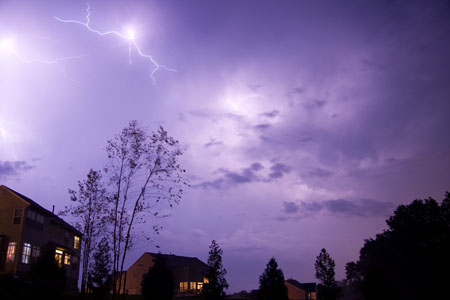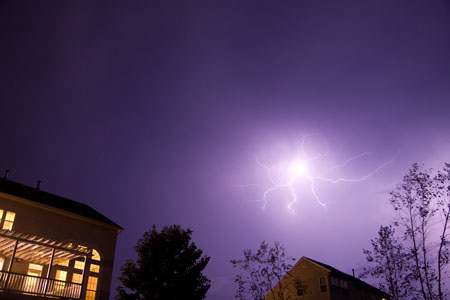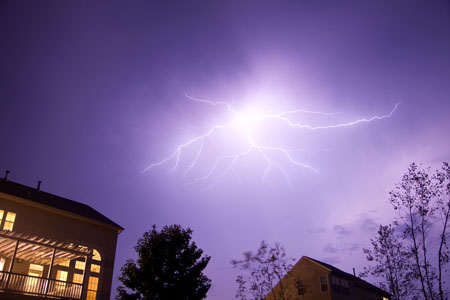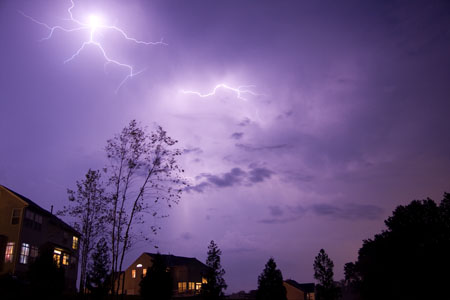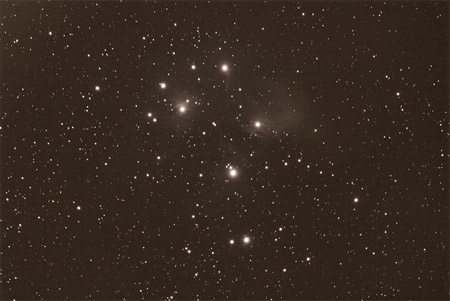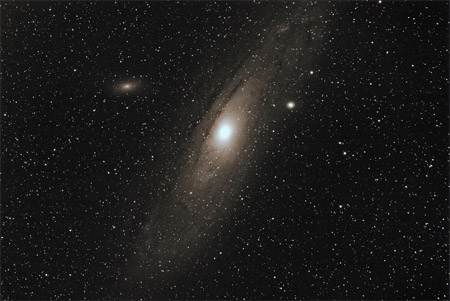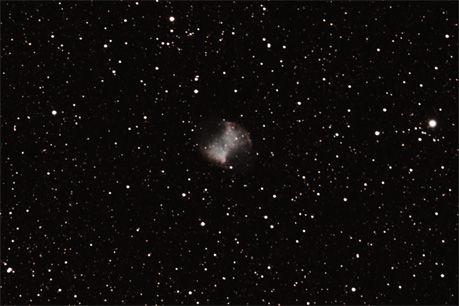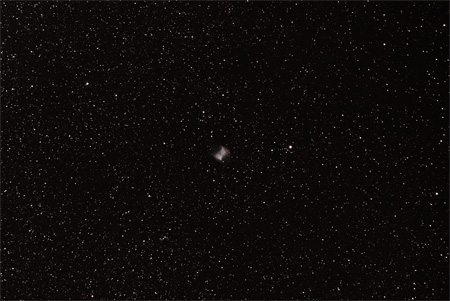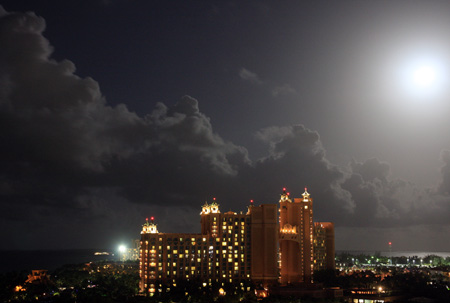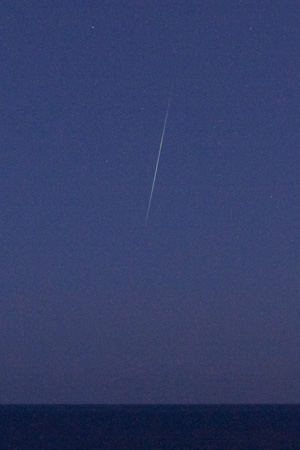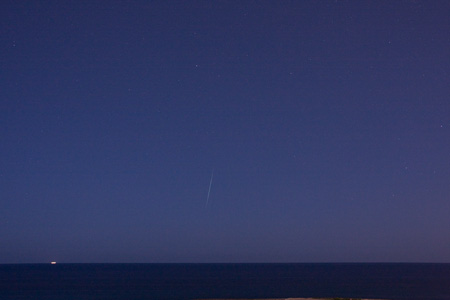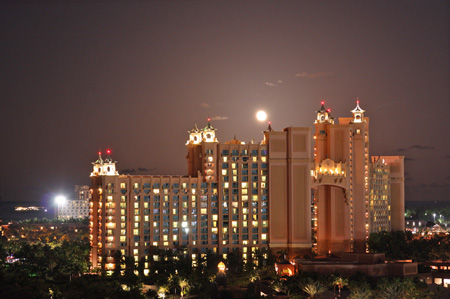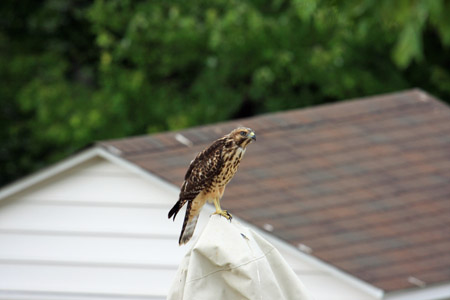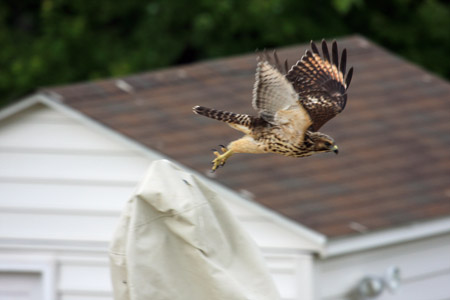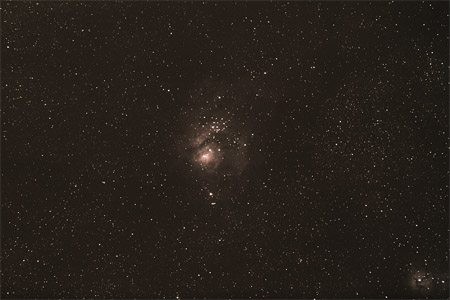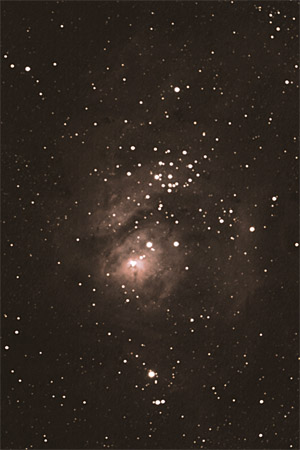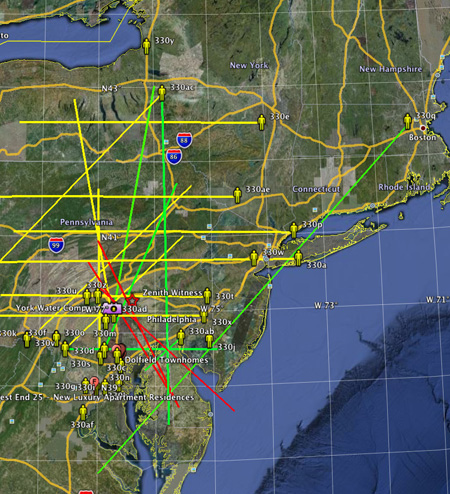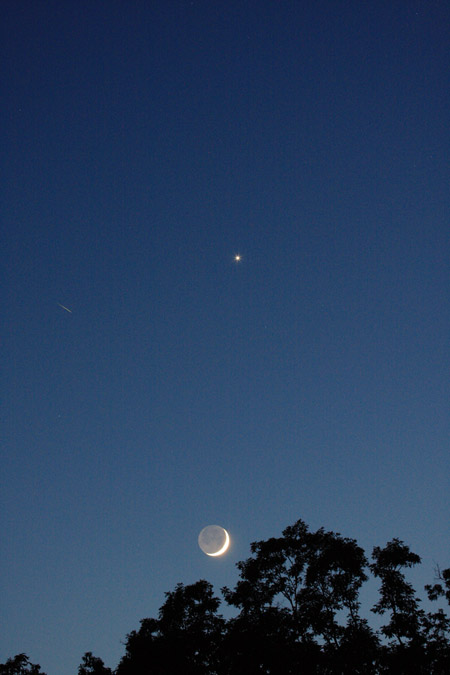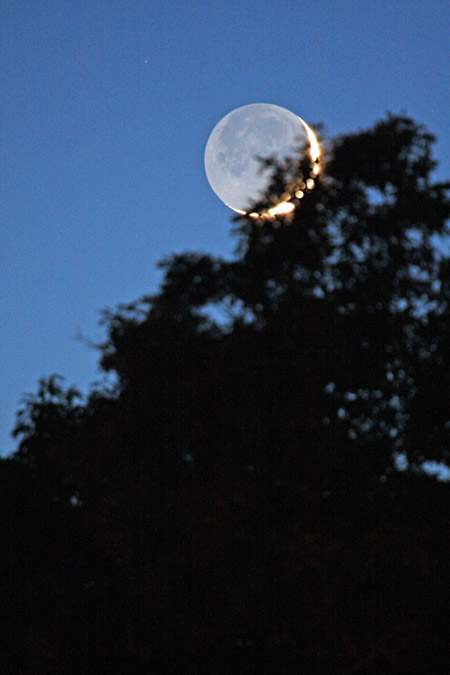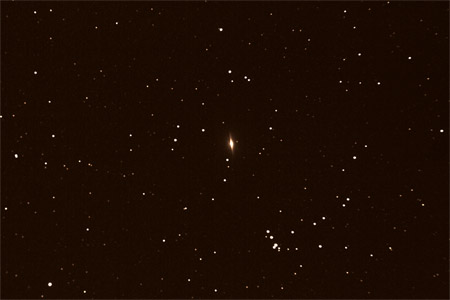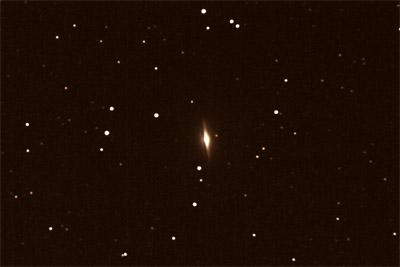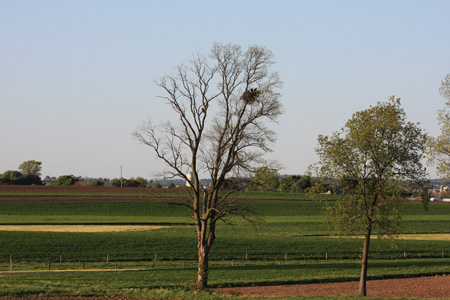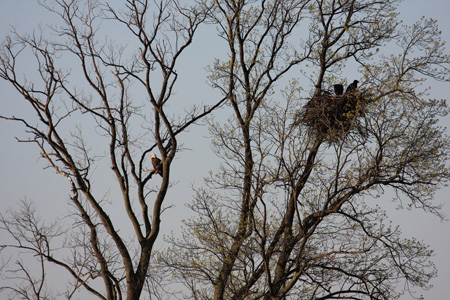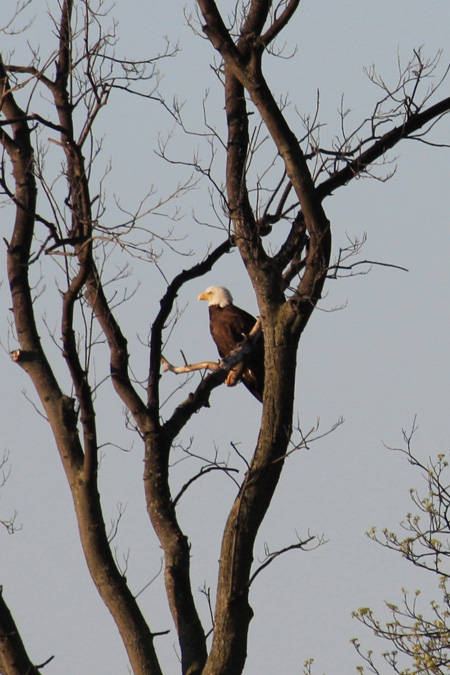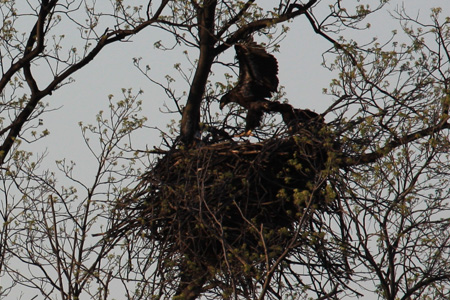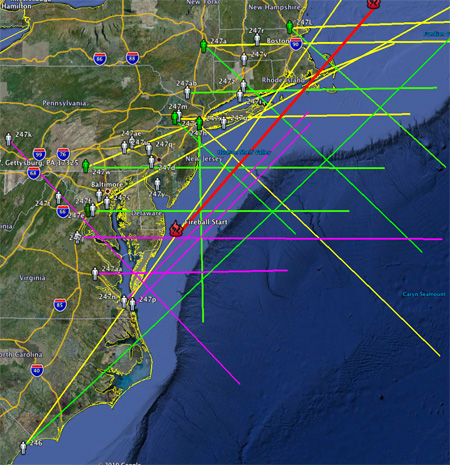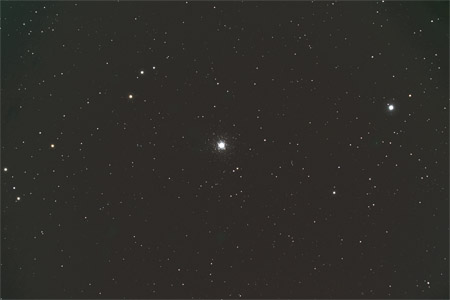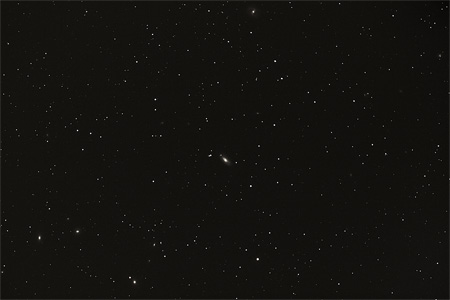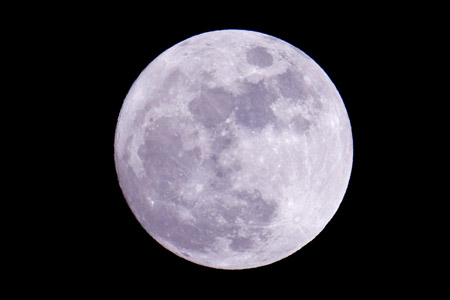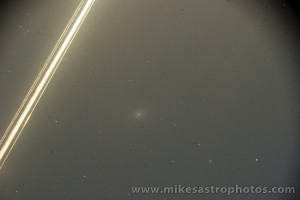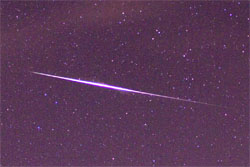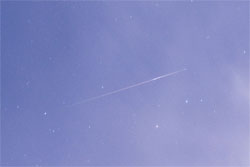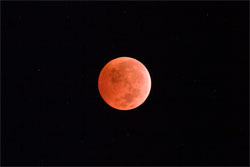Archive for 2010
Lightning Storm
by Mike Hankey, under Clouds
A lightning storm blew through Baltimore County this past Wednesday September 22, 2010. It was a nice show with visible bolts firing every couple of seconds.
Pleiades
by Mike Hankey, under Stars
Here’s a photo of the Pleiades also known as the Seven Sisters. This open star cluster is one of the closest to Earth and clearly visible to the naked eye in the constellation Taurus. The prominent dust cloud surrounding the stars was once thought to be a nebula left over from the star formation, but is now believed to be just a dust cloud within the interstellar medium.
Photo Details
William Optics FLT 98
Canon 20Da Camera
13×3 minute ISO 400
SBIG STV Auto Guider
Andromeda
by Mike Hankey, under Galaxies
Here’s a recent photo of the Andromeda Galaxy taken with a William Optics FLT98. At a mere 2.2 million light years away, Andromeda is the closest spiral galaxy to Earth and visible as a fuzzy dot in binoculars or a small telescope. On a dark night you can see it with your naked eye or a basic camera lens. Andromeda is estimated to have over 1 trillion stars making it 2-3 times larger than the Milkyway.
Photo Details
William Optics FLT 98
Canon 20Da Camera
12×3 minute ISO 400
SBIG STV Auto Guider
M27 – Dumbell Nebula
by Mike Hankey, under Nebula
Here’s a picture of the Messier 27, the Dumbell Nebula, a planetary nebula 1367 light years away from Earth.
Full magnification cropped frame below.
and here is the full picture.
Photo Details
William Options FLT 98
Canon 20Da Camera
60×1 minute ISO 400
SBIG STV Auto Guider
Atlantis 2010
by Mike Hankey, under Misc
I recently went on vacation to Atlantis in the Bahamas and took some astro photos while I was there.
The full moon in July was called the hay moon because farmers cut their hay in July around this time. I can confirm this happens in Lancaster as I’ve seen more cut hay fields in the last two weeks than I have all year. Here’s a picture of the Hay Moon rising over Atlantis.
I really wanted to catch a meteor photo over the ocean, so I setup my camera and tripod on the balcony and waited. I caught one within 15 minutes, my first night trying, but not a single one after.
Here’s the full picture:
Here’s a picture of the moon just over the main towers the last night I was there.
A time lapse video of the moon rising:
And the sun rise the morning I went home.
Good times…
Hawk
by Mike Hankey, under Misc
I spotted this hawk in my backyard on Friday morning. He liked sitting on top of my covered telescope tripod.
He had a good view from up there and then saw something he liked.
There have been swarms of beatles in the yard the last few days and this guy was spotting out some breakfast.
Umm protein…good.
I wasn’t sure what type of hawk this was so I posted the pictures to a birding forum. This is what Mike Miller from Astromart had to say:
This is an immature Red-shouldered Hawk. Note the bright buffy bar, near the tip of the far wing in Photo #2. This is diagnostic for Red-shouldered, and cleanly separates it from Broad-winged, which can be very similar, especially with a perched bird.
Lagoon Nebula – M8
by Mike Hankey, under Nebula
Here’s a photo of Messier 8 — The Lagoon Nebula, a giant interstellar cloud in the constellation Sagittarius.
June 24th, 2010 – Another Baltimore / PA Meteor
by Mike Hankey, under Comets & Meteors
Another fireball meteor fell over Baltimore and PA on June 24th, 2010.
Orioles fans watched it streak across the Baltimore sky line during a night game Thursday. How cool would that have been!? Plus the O’s won.
Here’s a map of the AMS witness reports, some reports from Maryland Weather Blog and the York Water video (yes York Water captured this one too).
From an early analysis / quick eye up it looks like the termination point for this fireball is somewhere north west of Harrisburg. I have some new data that I’m working with while leads and information continue to come in. Its looking like meteorites may have landed in the Appalachian mountains which will be very difficult terrain to go meteorite hunting in.
Here are a view news stories. The York Daily Record story has a video of the fireball as it terminates.
http://weblogs.marylandweather.com/2010/06/meteor_during_orioles_game.html
http://www.ydr.com/ci_15379570?source=most_viewed
Will keep you posted.
Venus and the New Moon In June
by Mike Hankey, under Lunar
Here’s a photo of Venus and the New Moon.
The yellow streak in the middle left looks a bit like a squiggly meteor or a UFO, but its actually a firefly.
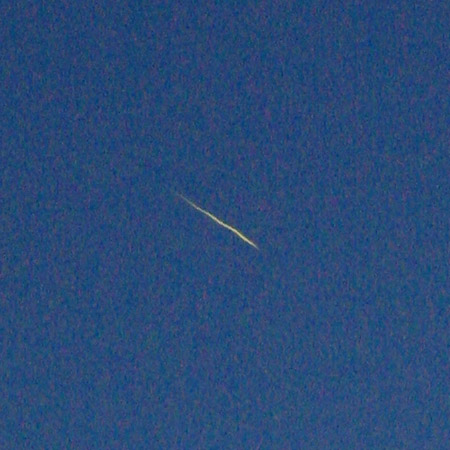
Firefly
Here’s a closeup of the moon right before it set.
Sombrero – William Optics FLT 98
by Mike Hankey, under Galaxies
Here’s a photo of the Sombrero Galaxy through the WOFLT98.
Here’s a crop at full resolution:
I’m still getting the hang of this scope, but check out the difference in zoom and quality with the Sombrero picture take with the SCT.
Photo Details
William Optics FLT98
Canon 20Da DSLR
3 frames @ 2 minutes each
ISO800
American Bald Eagle’s Nest
by Mike Hankey, under Mason Dixon Meteor
I came across this Bald Eagle’s nest while hunting for meteorites in Lancaster, PA.
As you can see there are two young eagles in the nest along with a momma (i think) keeping watch.
Here’s a close up of one of the parents. I few days prior I saw two adults, but when I took this picture there was only one adult at home.
While I was watching and photographing from about 150 yards away, one of the baby eagles started to fly (or at least tried to).
I captured about 100 pictures of this young eagle jumping all over its nest, trying its hardest to make flight. Best it could do was about a foot off the crest of the nest. I sequenced the frames and made a short time lapse video of this eagle learning to fly.
I came back to the nest about a week later and no one was home, so I guess the young ones figured it out.
East Coast Fireball – May 10th, 2010 4:45 AM
by Mike Hankey, under Comets & Meteors
A large fireball was reported along the east coast early Monday morning. Observations were reported all along the east coast including: South Carolina, Virginia, Maryland, Pennsylvanian, New Jersey, New York, Connecticut and Massachusetts. No videos of this great site have yet to be reported. Over 30 AMS reports where submitted and after reviewing the details on these observation it looks like the meteor landed in the Atlantic Ocean. Too bad, it sounded like it had all of the characteristics to be a meteorite dropper.
Here’s a map of the AMS reports along with an estimated meteor path based solely on these reports.
To help understand the image above: Green lines are the first point a witness observed; yellow lines are the second point observed; purple lines are from witnesses who only reported a single point; the red line is the estimated meteor path.
From what I can tell the meteor was headed on a south west to north east path, hugging the coast line.
This meteor path is an estimate based on the AMS reports. I think its safe to say this thing landed in the drink, so there’s not much point in refining the trajectory more than this. If you have a better idea about the path of this meteor lmk.
Here’s a write up on the fireball from Frank Roylance’s Blog. There are a lot of great comments about the event on this site.
Here’s a link to the google earth KMZ file for this fireball.
Coincidentally there was another large fireball reported over Wisconsin within 15 minutes of this one. The WI fireball was a different event all together and most likely not related, but this seems to be an odd and rare occurrence [two big fireballs so close to each other in terms of both distance and time].
I’m a little bummed out I still don’t have my allsky cam setup. I’ve missed two great fireballs since deciding to get an allsky cam setup. I’m on it now.
M53
by Mike Hankey, under Stars
Here’s a photo of Messier 53, a globular cluster in the Coma Berenices constellation.
M88
by Mike Hankey, under Galaxies
Here’s a wide field shot of the galaxy M88, one of 15 Messier galaxies in Virgo’s cluster of galaxies. Approximately 47 million miles away from Earth, M88 is a spiral galaxy with a highly elliptical orbit. This orbit will lead M88 to the core of the galaxy cluster in another 200-300 million years. There are several other galaxies visible in this picture, including M91 at the top center of the picture.
Here’s a crop of the galaxy at full resolution
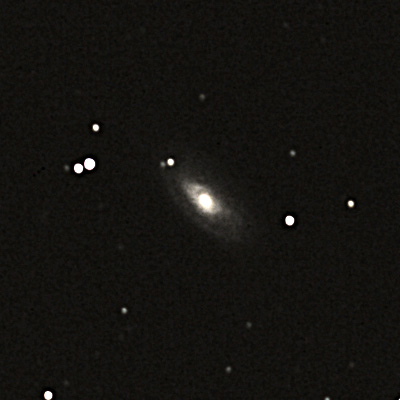
Galaxy M88 - April 14th, 2010
Photo Details
William Optics FLT98 / Celestron CGEM Mount
Canon 20Da DSLR Camera
30 minute exposure 19×2 minute
ISO 800
STV Autoguider
No moon, clear
Full Moon
by Mike Hankey, under Lunar
I got a new telephoto camera lens for birding and wild life photography. I thought I would give it a try on the full moon.
